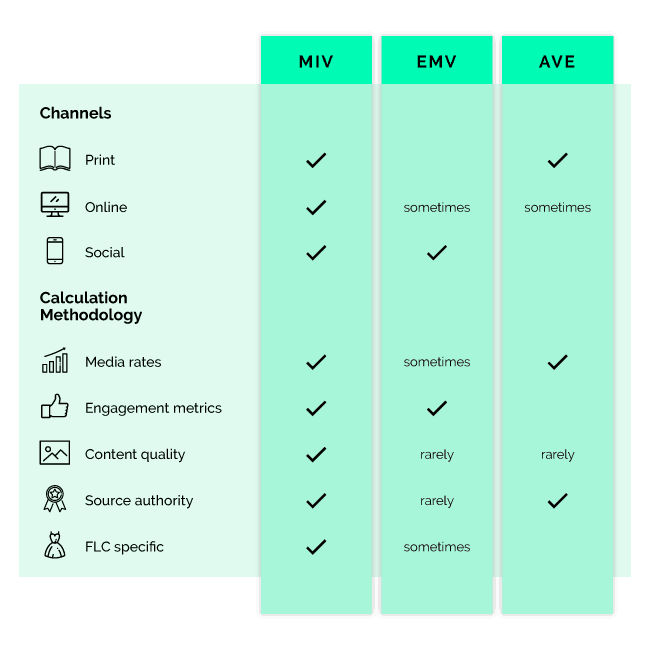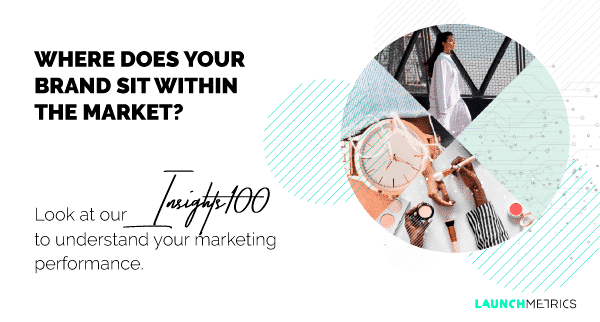Learning how to measure earned media value is becoming increasingly important, as consumers are basing more and more of their purchasing decisions on word-of-mouth recommendations from trusted, or authentic sources. Millennial and Gen Z audiences are demanding more transparency from brands and look to other sources to authenticate true brand values in the fashion, luxury and cosmetics sectors. These sources can range anywhere from friends and family to the influencers they follow on social media or articles they read on fashion or beauty blogs.
Measuring earned media value; however, continues to be a struggle. “Brands tend to think of earned media as free, but in reality, there's a cost associated with it." says Arnaud Roy, chief strategy officer at Launchmetrics, “You are paying for the coverage, even if it’s not a direct line item in your marketing budget.”
Think about celebrity endorsements for a moment, such as Zendaya’s collaboration with Tommy Hilfiger. What started as a paid collaboration has resulted in massive amounts of earned media; with multiple publications, influencers and retail partners covering launches and red carpet events. The brand is also able to repurpose many of these assets across their own social media accounts to bolster the overall business impact.
View this post on InstagramBring the shimmer in this must-have #TommyXZendaya midi dress. Tap to shop ⭐ @zendaya
Because there’s a cost associated with these activities, marketing and PR departments need to calculate an ROI to show how their investments perform. Metrics such as Advertising Value Equivalent (AVE) and Earned Media Value (EMV) have been relied upon in the past, but both have their drawbacks.
In this article you’ll learn…
The danger of relying on EMV & AVE
AVE has long been considered the standard for measuring editorial placements in print publications. It is calculated by multiplying advertising rates by the page percentage an editorial placement covers. AVE then assigns a monetary amount for the value that a piece of coverage earned. This method is highly accurate for print placements, but the lack of standardized advertising rates for digital channels makes it difficult to calculate an accurate AVE for online and social media mentions.
As a result, many marketers have turned to EMV as a way to calculate ROI for online and social media. Unfortunately, there is neither a standardized approach nor definitive criteria for calculating EMV. Methodologies are typically based on impressions and/or engagement; and while some companies leverage media rates, not everyone does - which is particularly risky. Assigning a dollar value without incorporating a baseline rate over-inflates the numbers and does not allow brands to correlate results back to actual marketing investments or business impact.
Additionally, AVE and EMV methodologies rarely incorporate content quality when defining values which can also over-inflate the numbers. Quality factors, such as image content, the number of brands mentioned and the number or type of hashtags, can significantly impact the overall value of coverage.
For example, posts with #giveaway typically have high levels of engagement, but it’s often the same people commenting multiple times as they tag different friends. A recent giveaway by @Tezza netted over 6K comments while other posts from the same time frame netted an average of 350 comments. While giveaways are a great way to attract new audiences and followers, the final media value must be adjusted to offset an unrealistic ROI.
The rise of Media Impact Value™
With the line between paid, owned and earned media becoming less and less defined and brands employing multi-channel marketing tactics to connect with consumers, it’s more important than ever to leverage a unified measurement methodology - such as Media Impact Value.
Media Impact Value is a proprietary algorithm that is finely tuned to the specificities of Fashion, Luxury, and Cosmetics (FLC) and has been written about by industry leaders including Vogue, WWD Beauty, and The Wall Street Journal. MIV® has been trained on actual media rates and 5+ years of FLC-specific campaign data and analyzes more than 100 different attributes, including content quality and source authority, to deliver a highly accurate metric.
MIV allows you to assign a true monetary value to marketing strategies across print, online and social media in order to calculate ROI. It also allows you to benchmark the performance of your different marketing strategies and investments including PR, celebrity endorsements, influencer marketing, retail partner marketing, and owned media.
Here’s a little cheat sheet to help you understand the difference between these three measurement methodologies:

Click here to learn more about how to measure earned media value and calculating the impact of marketing contributions to brand value.

